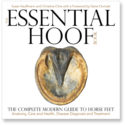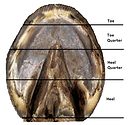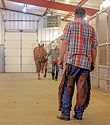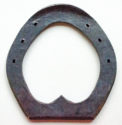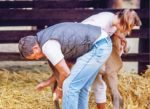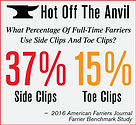Advertise Follow Us
American Farriers Journal
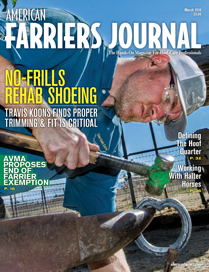
View Archived Issues
March 2018
Volume: 44
Edition: 2
American Farriers Journal is the “hands-on” magazine for professional farriers, equine veterinarians and horse care product and service buyers.
-
Table Of Contents
Table Of Contents
Farriers Question AVMA’s Proposed Elimination Of Exemption
Definition of veterinary medicine is open to interpretation, farriers sayRead MoreShoeing for a LivingThe Reluctant Remedial Shoer
California farrier Travis Koons finds success relying on a minimalist approach in therapeutic casesRead MoreDefining The Hoof Quarters
The prevalence of caudal foot problems leads Hall Of Fame farrier to spell out the critical, yet elusive, descriptionRead MoreKeys To Succeed With Halter Horses
There are many factors that lead to improving your work as a halter horse farrier — some of them not specific to only this disciplineRead MoreSummit Delivers Powerful Takeaways For Attendees
Industry professionals share some of the ideas they learned that will most benefit their practicesRead MoreHow Would You Handle These Ethical Concerns About Footcare?
Farriers share their opinions and advice for handling these common situations encountered in hoof-care practicesRead MoreLessons from the Track
Veteran Thoroughbred and Standardbred farriers share some quick, important lessons they’ve honed over their careersRead More7 for the Ages
Five farriers and two veterinarians were elected to their respective Halls Of Fame at the 2018 International Hoof-Care Summit.Read MoreFarriers Recognized As Future Footcare Leaders
Three farriers were honored at the 2018 International Hoof-Care Summit for making remarkable progress in their footcare careers just 3 years out of shoeing schoolRead MoreFamily Streak Started In Summit
Pennsylvania farrier Stephen Stoltzfus comes out on top in bar shoe challengeRead MoreThe Time For Your Money Is Now
Make your hard-earned money work for you by taking part in low risk investmentsRead MoreThe Farrier’s Role In Correcting Angular Limb Deformities
Proven techniques for treating mild to serious deviations in foalsRead MoreImprint Training Produces Cooperative Horses
Properly performed techniques after birth result in equids that accept trimming and nailing, California vet says of his controversial trainingRead MoreFarriers Research Each Day, Why Not Document It?
Collecting and sharing data improves the life of the horse and the industryRead MoreResearch Journal: March 2018
The information, ideas and opinions expressed are those of the author and do not necessarily represent those of the United States Department of Agriculture.Read More -
Featured Articles
Featured Articles
Shoeing for a LivingThe Reluctant Remedial Shoer
California farrier Travis Koons finds success relying on a minimalist approach in therapeutic casesRead MoreKeys To Succeed With Halter Horses
There are many factors that lead to improving your work as a halter horse farrier — some of them not specific to only this disciplineRead MoreThe Farrier’s Role In Correcting Angular Limb Deformities
Proven techniques for treating mild to serious deviations in foalsRead More - Digital Edition
-
Online Extras
Online Extras


